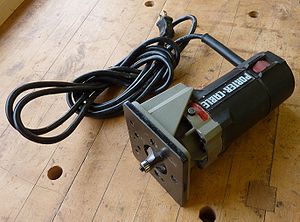Woodworking can be a very enjoyable hobby, but it can also be hazardous to your safety if you do not practice the right safety precautions. You must always be aware of the safety hazards when working with hand tools, portable power equipment, and woodworking machines. Here are ten safety tips that will make your woodworking experience safer and more enjoyable.
1. Wear proper safety equipment. The most important rule when woodworking is to make sure you’re wearing the proper safety equipment. When working with very noisy tools, you should have the right hearing protection. Latex gloves may be necessary when applying finishes and you should always wear protective goggles when in the wood shop.
2. Wear the right clothing. Avoid wearing loose clothing when in the wood shop. Loose clothing can become entangled in a saw blade or cutting head. Wear comfortable clothing that will also protect your body from flying wood chips. Also remember to remove any dangling jewelry before you begin working.
3. Avoid drugs and alcohol. Being under the influence of drugs or alcohol while in the wood shop can be a dangerous mix. It may seem harmless to drink a few beers while in the wood shop, but you will be much less likely to encounter a problem if you avoid drinking at all while working on a project.
4. Disconnect power before blade changes. If you need to change a blade on a power tool, always make sure the power tool is disconnected before doing so. You could lose a finger or other limbs if you forget to do this.
5. Use just one extension cord. For all 110-volt power tools in the wood shop, use one heavy-duty extension cord. This way, you can switch the cord from tool to tool before the next tool can be used and you will always remember to disconnect one power tool before using another.
6. Use sharp blades and bits. If the blade on a tool isn’t as sharp as it should be, this can be a potential safety hazard. The tool and the woodworker will have to work twice as hard to complete the desired task. This means the tool will be much more likely to kick-back or bind. A sharper tool will give you better results.
7. Check for nails, screws, and other metal. Always check the stock you’re preparing to cut for any metal before cutting. Nails and other metals can damage the cutting head or cause it to kick back which can cause an injury. Alternatively you can contact a professional like Cut My Wood for your wood cutting needs.
8. Work against the cutter. A router bit or saw blade should cut against the motion and not with it. The cutter should cut into the stock, not with it.
9. Don’t reach over a blade to remove cut-offs. When working on a table saw, never put your hands near the moving blade. Wait until the blade has stopped moving then reach for the cutt-off. Switches can be accidentally bumped or malfunction, so always be aware of your surroundings and don’t relax and put your hands too close.
10. Don’t get distracted. Distractions are a part of life. If you’re distracted while woodworking, finish the cut to a safe conclusion before dealing with the distraction. Taking away your full attention from a project can be a major safety issue.
Trisha Banks is a blogger for Loewy Law Firm in Austin, Texas. Trisha wants to learn more about safety in the workplace.
[toggle title=”Featured images”]
[/toggle]
Related articles
- CQC report says hospital care has not improved since Mid Staffs scandal (theguardian.com)
- Despite the deaths, cycling in London is getting safer (newscientist.com)
- More transparency needed in hospitals (telegraph.co.uk)
- Construction workers struggle with pain, stress from injuries (hsph.harvard.edu)



Leave a Reply